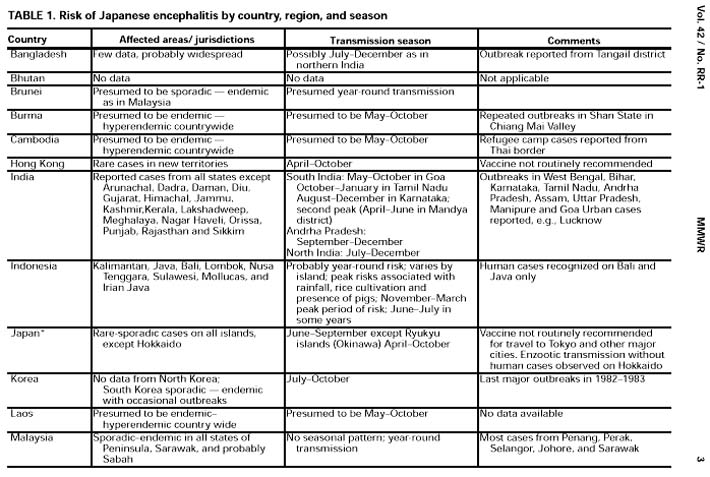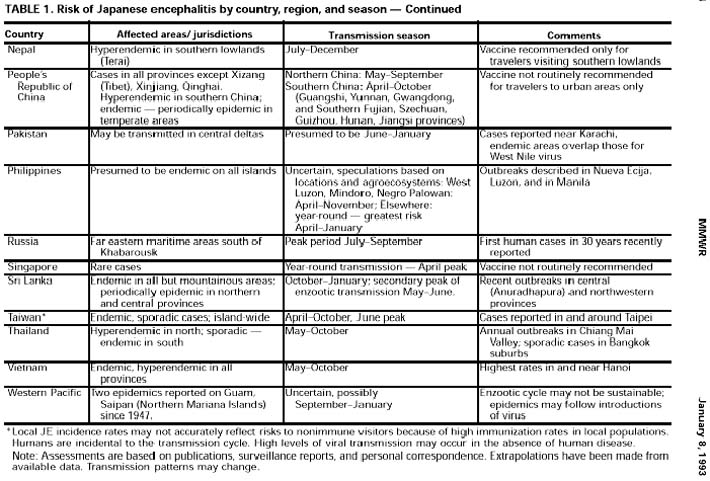Japanese encephalitis epidemiology and demographics
|
Japanese encephalitis Microchapters |
|
Diagnosis |
|---|
|
Treatment |
|
Case Studies |
|
Japanese encephalitis epidemiology and demographics On the Web |
|
American Roentgen Ray Society Images of Japanese encephalitis epidemiology and demographics |
|
Japanese encephalitis epidemiology and demographics in the news |
|
Blogs on Japanese encephalitis epidemiology and demographics |
|
Risk calculators and risk factors for Japanese encephalitis epidemiology and demographics |
Editor-In-Chief: C. Michael Gibson, M.S., M.D. [1]
Epidemiology and Demographics
Incidence
In rural villages, exposure and infection occur at a very early age with half of all cases occurring in children less than 4 years of age. Typical incidence rates in those younger than 19 years range from 10 to 100 per 100,000 population per year[1].
Developed Countries
- Rare outbreaks in U.S. territories in Western Pacific
- Japanese encephalitis has been reported on the Torres Strait Islands and two fatal cases were reported in mainland northern Australia in 1998. The spread of the virus in Australia is of particular concern to Australian health officials due to the unplanned introduction of Culex gelidus, a potential vector of the virus, from Asia.
Developing Countries
- Leading cause of viral encephalitis in Asia with 30-50,000 cases reported annually
- Fewer than 1 case/year in U.S. civilians and military personnel traveling to and living in Asia
The disease is endemic with seasonal distribution in temperate climate zones of Asia as well as South and South-East Asia. All year transmission is observed in tropical climate zones. Currently, JE is considered hyperendemic in parts of India and Nepal, where authorities have responded with immunization campaigns. Countries which have had major epidemics in the past, but which have controlled the disease primarily by vaccination, include China, Korea, Japan, Taiwan and Thailand. Other countries that still have periodic epidemics include Viet Nam, Cambodia, Myanmar, India, Nepal, and Malaysia.
Large outbreaks of JE with clear summer seasonality[2] also are periodically reported on the Indian subcontinent, as illustrated in Uttar Pradash, where 6097 suspected cases, including 1398 deaths, were reported between July 1 and November 10, 2005.



References
- ↑ Kollaritsch H, Paulke-Korinek M, Dubischar-Kastner K (2009). "IC51 Japanese encephalitis vaccine". Expert Opin Biol Ther. 9 (7): 921–31. doi:10.1517/14712590903042282. PMID 19527110.
- ↑ Vaughn DW, Hoke CH (1992). "The epidemiology of Japanese encephalitis: prospects for prevention". Epidemiol Rev. 14: 197–221. PMID 1337744.